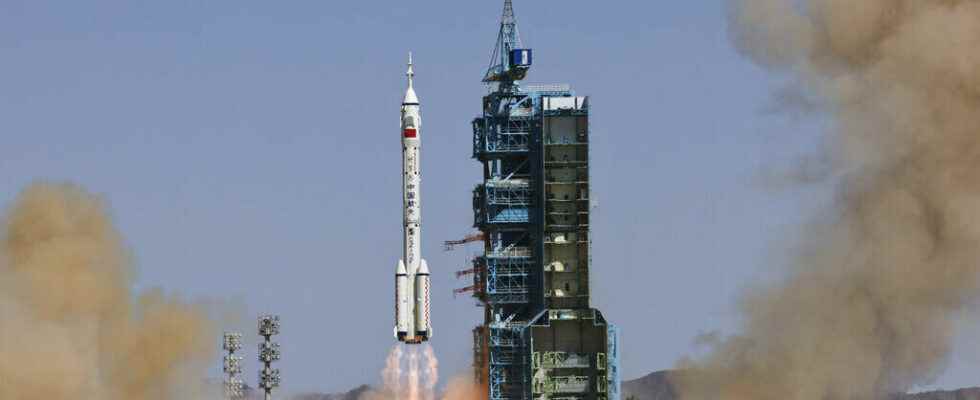Successful takeoff for the mission Shenzhou-14the ” divine vessel ” in Chinese. The 3 taikonauts who boarded the rocket Long March 2F this morning in northwest China, are to contribute to the completion of the construction of the Chinese space station.
With our correspondent in Beijing, Stephane Lagarde
Chen Dong, Liu Yang and Cai Xuzhe, the 3 taikonauts of this Shenzhou mission, 14th of the name, were entitled to the military salute and the brass band during the traditional ceremony before take-off this morning on the site 901 of the “base 20” of the People’s Army. The Jiuquan launch pad is also used to launch satellites.
space lab
At 10.44 a.m. sharp, China Central Television broadcast the Take-off pictures. 5, 4, 3, 2, 1! The rocket Long March 2F rises into the cloudless blue sky of Inner Mongolia province, before the spacecraft Shenzhou does not separate from the propellant. Successful launch, applause, as for previous missions. This new success took place in front of a public of tourist fans of the stars, and, more broadly, benefits from a wide media coverage in China.
But the work has only just begun for the space trio, which will remain in weightlessness for six months, in order to transform “Tiangong”, the Chinese space station into a laboratory. The crew is experienced: Chen Dong is a veteran of Shenzhou-11, Liu Yang is the first Chinese to be sent into space during the mission Shenzhou-9Cai Xuzhe, on the other hand, is making its first outing from the Earth’s atmosphere today.
More complicated than hotel check-in
Concretely, the objective is to help in the assembly of two new modules, Wentian and Mengtianwhich should arrive in July and October next, to hang on the central module (Tianhe) whose construction began in April 2021. Before that, it will first be necessary to dock at the station, the spacecraft Shenzhou-14inspired by Soyuz Russian. ” It’s a little more complicated than checking in at the hotel said a commentator on CCTV this morning. And once the work is completed, “Tiangong” could be the only station to remain in orbit, following the withdrawal of the ISS in the coming years.
